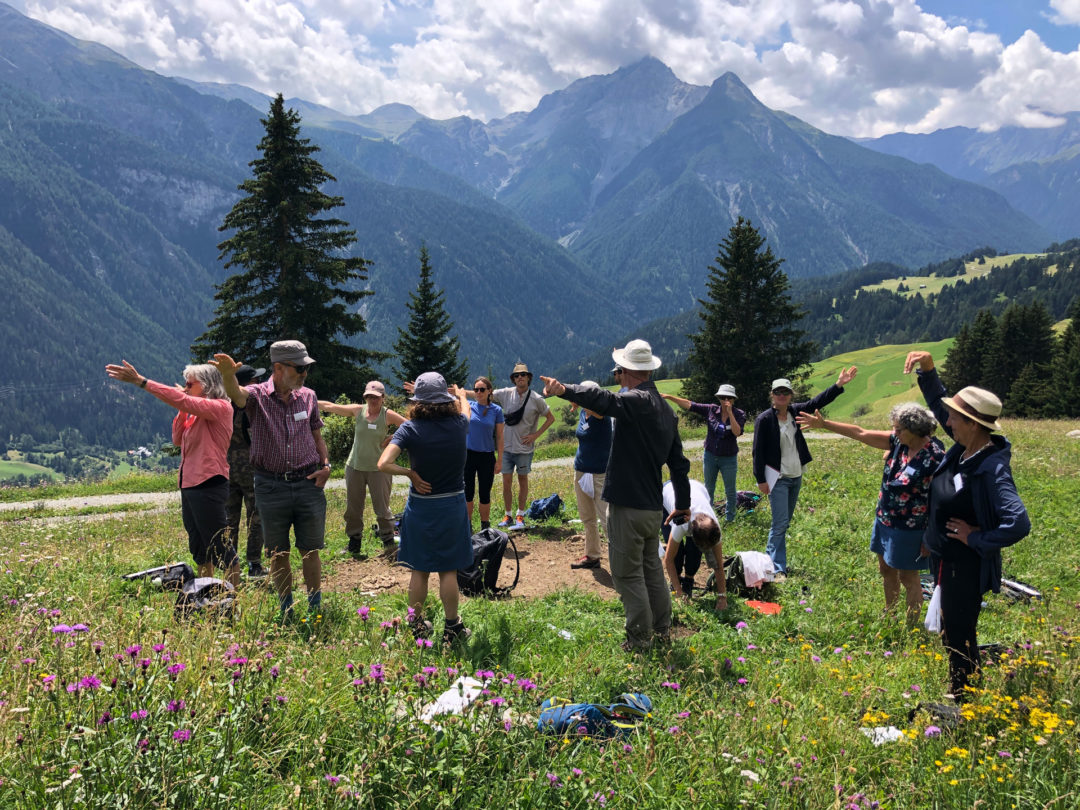Follow Your Nose – Exploring our Environment by Smelling
Smell is a powerful sense. Many of us have experienced that a small waft of a particular aroma can evoke strong, meaningful associations with an experience, a situation or a landscape in the past. Our sense of smell acts like a key that opens doors to important past experiences and the emotions associated with those experiences. Yet, we humans continuously breathe in the aromas in the landscape around us, generally without being consciously aware of their invisible and ephemeral presence and meaning.
Every environment, be it an open landscape, an enclosed garden or an intensely used urban area, offers a varied palette of olfactory experiences. Volatile smells arise and are constantly changing, following the rhythm of the day, the season, the weather and the life cycles of plants, animals and people. However, most scents in our environments are not just there to appeal to our human noses. An ecosystem like a landscape or garden is a dynamic olfactory network of communication and interaction between species and environment. Essential oils, for example, are part of a plant’s defense and communication system, and the sweetness of the pollen is a means to attract insects that contribute to pollination. Our sense of smell can give us – to some extent- access to those dynamics, if we are aware of the role of this form of perception and are willing to explore and experience our environment by following our nose. Landscapes offer olfactory panoramas and niches in which smells are constantly renewed according to the daily rhythm, the seasons, the life cycles of people, plants and animals.
On this olfactory walk we undertake different olfactory activities and exercises both individually and as a group. Together we will explore what our nose can tell us about the qualities and characteristics of the environment of Glurns, about the presence or absence of variety and diversity in different zones and habitats.
Curdin Tones
Since his graduation in 2003 at the Gerrit Rietveld Academie in Amsterdam, the practice of Curdin Tones (1976, Winterthur) gradually evolved from a sculptural studio practice into a socially engaged practice that focuses on contextual thinking and acting and public space. At current he is based both in Amsterdam, NL, and Tschlin, CH. Since 2004 he is represented by Andriesse&Eyck Gallery in Amsterdam. His work has been added to private and public collections, both nationally and internationally. www.curdintones.com
Defining his artistic practice more as an integral part of the societies in which Tones is living and working, he founded the cultural initiative SOMALGORS74 in Tschlin, Switzerland. As an independent initiative, SOMALGORS74 is engaged in processes of collective creation. Working from an artistic position that asks, who the others are that co-constitute what is meaningful, the projects are all informed and executed by mechanisms of co-creation. All the activities aim at addressing content, which have a specific reference to the alpine environment, its past and future. In order to inscribing these projects meaningfully in their local contexts and societies, both art and design strategies are used. www.somalgors74.ch




